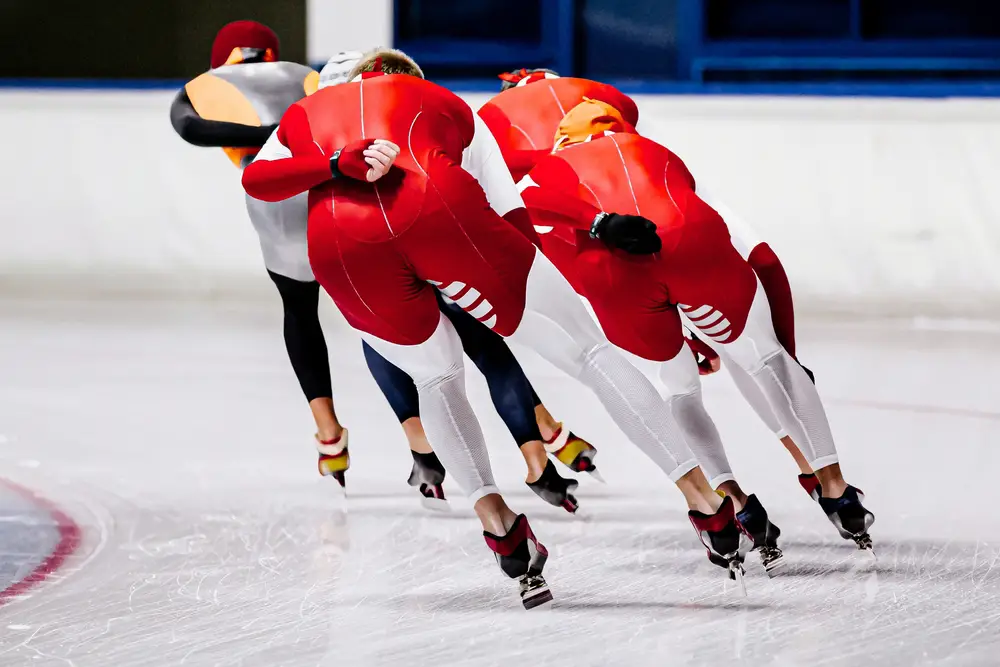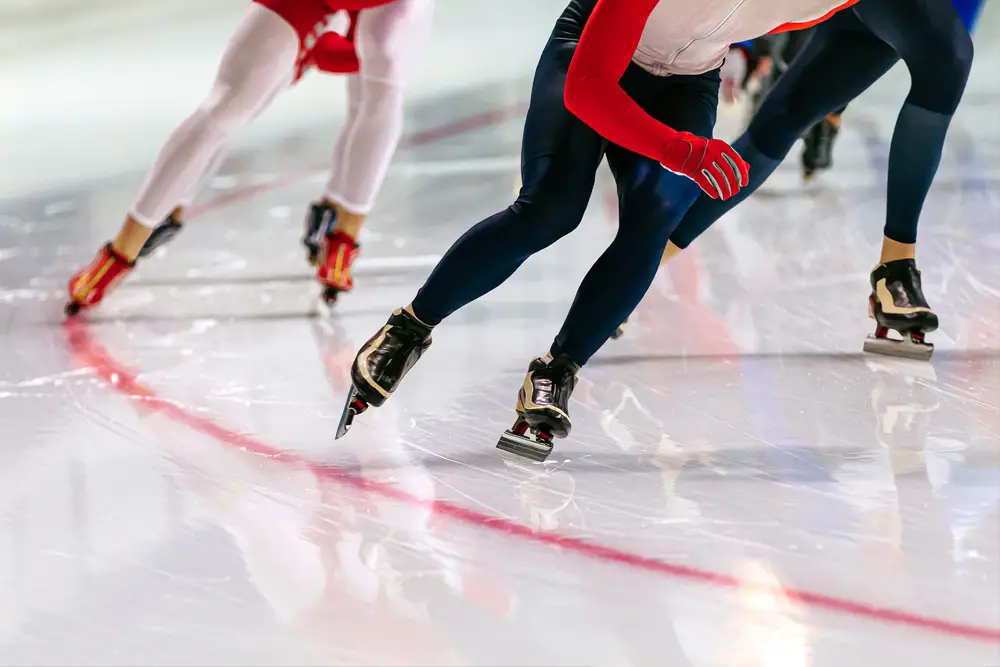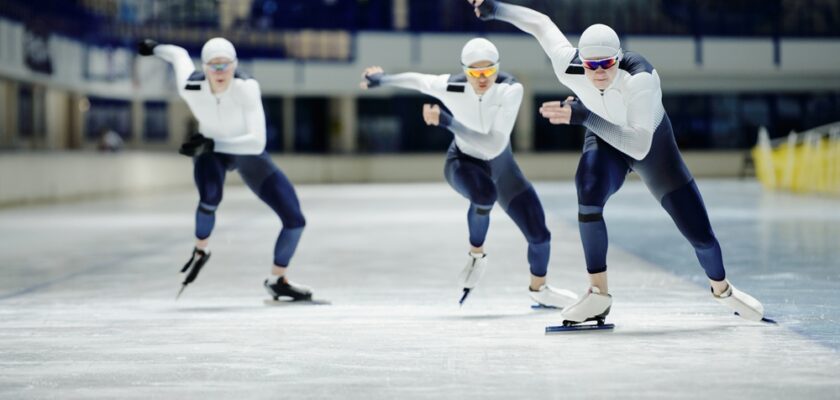Speed skating is a very popular sport in many parts of the world, especially in countries with cold climates, where ice skating is a tradition.
This sport has well-defined rules to ensure that the practice is safe, fair and enjoyable for everyone watching. With that in mind, we’ve put together a special article on the main rules of speed skating!
In this article, we’ll talk about everything from the structure and size of the rinks to the infractions and penalties that can be committed when practicing the sport. Each of the topics mentioned below is essential for those who want to venture into the sport or just enjoy it.
Check out the rules of speed skating!
Open your Betano account and get up to 1,000 reais in bonuses.
PIX payments, live games and super odds!
Click here to open your account!

Speed skating rules: complete list
- Track;
- Duration;
- Equipment;
- Categories;
- Competitions;
- Scoring;
- Infractions and penalties;
- Safety;
- Start and finish.
Speed skating rules: rink
The ice speed skating rink is an oval structure with a circumference of 400 meters. It is divided into two lanes of equal width, the inner lane being used in the corners to facilitate timing.
The rink surface must be made of homogeneous ice that is in ideal temperature and quality conditions.
In in-line skating competitions, the rinks measure between 200 and 300 meters and are made of asphalt or concrete, with tighter turns and shorter straights compared to ice rinks.
Speed skating rules: duration
Speed skating competitions vary in length, depending on the distance to be covered. Competitions can be divided into short and long distance races. Find out more:
- The short-distance races are 500 meters and 1000 meters;
- The long-distance races are 5000 meters and 10000 meters;
- And the middle-distance races, such as 1500 meters.
In each of these events, skaters must complete a specific number of laps in the shortest possible time.
Speed skating rules: equipment
Check out the main pieces of equipment used in speed skating:
- Skates: speed skates must have long, narrow blades;
- Clothing: skaters’ clothing is made of aerodynamic materials such as lycra or spandex;
- Accessories: items such as helmets, gloves, goggles and neck protectors are also essential equipment to prevent injuries in the event of a fall.
Speed skating rules: categories
In speed skating there are competition categories divided by age and gender. Check them out:
- Youth: up to 18 years old;
- Junior: 19-22 years;
- Senior: 23 and over.
Within each category mentioned above, athletes compete over different distances, ranging from 500 meters to 10,000 meters.
Speed skating competitions can be individual, when each skater competes against the clock, or in teams, as in team pursuit and relay events.
Speed skating rules: competitions
The format of figure skating competitions can vary greatly, but they usually involve qualifying rounds, semi-finals and finals. Here’s how it works in practice:
- In the qualifying rounds, the skaters compete in heats that will determine whose best times will advance to the semi-finals.
- In the semi-finals and finals, then, the athletes who have passed will compete directly against each other, thus determining who the big winners will be.
At major events such as the Olympic Games, regional and world qualifying events are also held.
Speed skating rules: scoring
In speed skating, the scoring system is based on time, so the skater or team with the lowest time in a race is declared the big winner.
In some competitions, such as the Speed Skating World Cup, points are awarded based on finishing positions, so skaters accumulate points throughout the season.
In relay races, the team must complete the total distance in the shortest time possible
Speed skating rules: infractions and penalties
There are several infractions that can result in penalties in speed skating, here are some of them:
- False start: this happens when a skater starts before the start signal, which results in a warning or disqualification.
- Interference: it is forbidden to intentionally block or obstruct another skater’s path.
- Skating outside the designated lanes: skaters must stay in their lanes to avoid collisions and ensure that the race is fair for everyone.
- Incorrect exchanges: in relay races, exchanges between skaters must take place within a specific zone. If they fail to do so, they could end up being disqualified.
Penalties can range from warnings to disqualifications, depending on the seriousness of the infraction committed by the athlete.
Speed skating rules: safety
Safety is a priority in speed skating, as serious accidents can happen. Therefore, all skaters must wear protective equipment such as helmets and gloves.
In addition, the ice must be kept in ideal sliding conditions, and any damage to the surface must be repaired immediately.
During competitions, the presence of medical personnel is mandatory in order to respond quickly to any accident or injury, preventing the athlete from suffering sequelae.
Speed skating rules: start and finish
The start and finish procedures are strictly controlled in speed skating. Find out more below!
- At the start, the skaters line up in their positions and wait for the referee’s signal.
- Note that any movement before the signal results in a false start.
- At the finish, the time is recorded when the skater’s blade crosses the line. In the event of a photo-finish, video technology is used to determine the winner.

Speed skating rules: complete list
- Track;
- Duration;
- Equipment;
- Categories;
- Competitions;
- Scoring;
- Infractions and penalties;
- Safety;
- Start and finish.
If you enjoyed learning more about the rules of speed skating, take the opportunity to check out our other special articles on the subject. Here you’ll find lists, news and much more about the world of sports!



